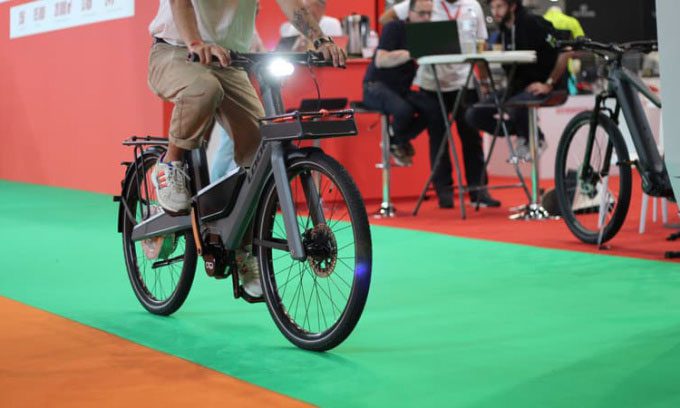The Rover 45 electric bicycle features an electronic crank system instead of a chain and belt, capable of reaching a maximum speed of 45 km/h.

The Rover 45 electric bicycle, developed by Cixi and Look Cycle, was showcased at the Prodays 2023 bicycle exhibition in Paris. (Photo: Cixi)
Bicycle chains are often messy, noisy, and can break when pushed to the limits on powerful electric bikes. Some manufacturers have replaced them with belts, but the French company Cixi has eliminated both to implement a new electronic crank system, reported New Atlas on July 14. Cixi partnered with Look Cycle to integrate this technology into the high-speed Rover 45 electric bicycle.
Cixi refers to the new electronic crank system as the Pedal Energy Recovery System (PERS). Essentially, the electronic components on the bike are controlled by algorithms, adjusting the resistance at the pedals and recovering energy from the rider to propel the vehicle forward via a central motor.
Riders can select different levels of pedal force, and the system will automatically adjust the torque (for instance, to provide more assistance when climbing hills) and the amount of energy used. The Rover 45 also incorporates a regenerative braking system to help charge the battery while reducing wear on the brake pads.
A 700 Wh battery is housed within the V-shaped frame between the downtube and the seat post, with the PERS unit mounted at the bottom bracket. The bike can achieve a maximum speed of 45 km/h with assistance, although its operating range has not yet been disclosed. Riders can control the energy levels through a companion mobile app, which can also be used to lock the system when parked, share a digital key with friends, or for location tracking.
The Rover 45 was displayed at Cixi’s booth during the Prodays 2023 bicycle exhibition held at Porte de Versailles, Paris, in early July. Cixi and Look Cycle have not provided any details regarding commercial availability. Cixi hopes to adapt its chainless pedaling technology across various vehicles such as electric bicycles, cargo bikes, mountain bikes, and urban tricycles with canopies. The first PERS systems are expected to be delivered to manufacturers next year.


















































